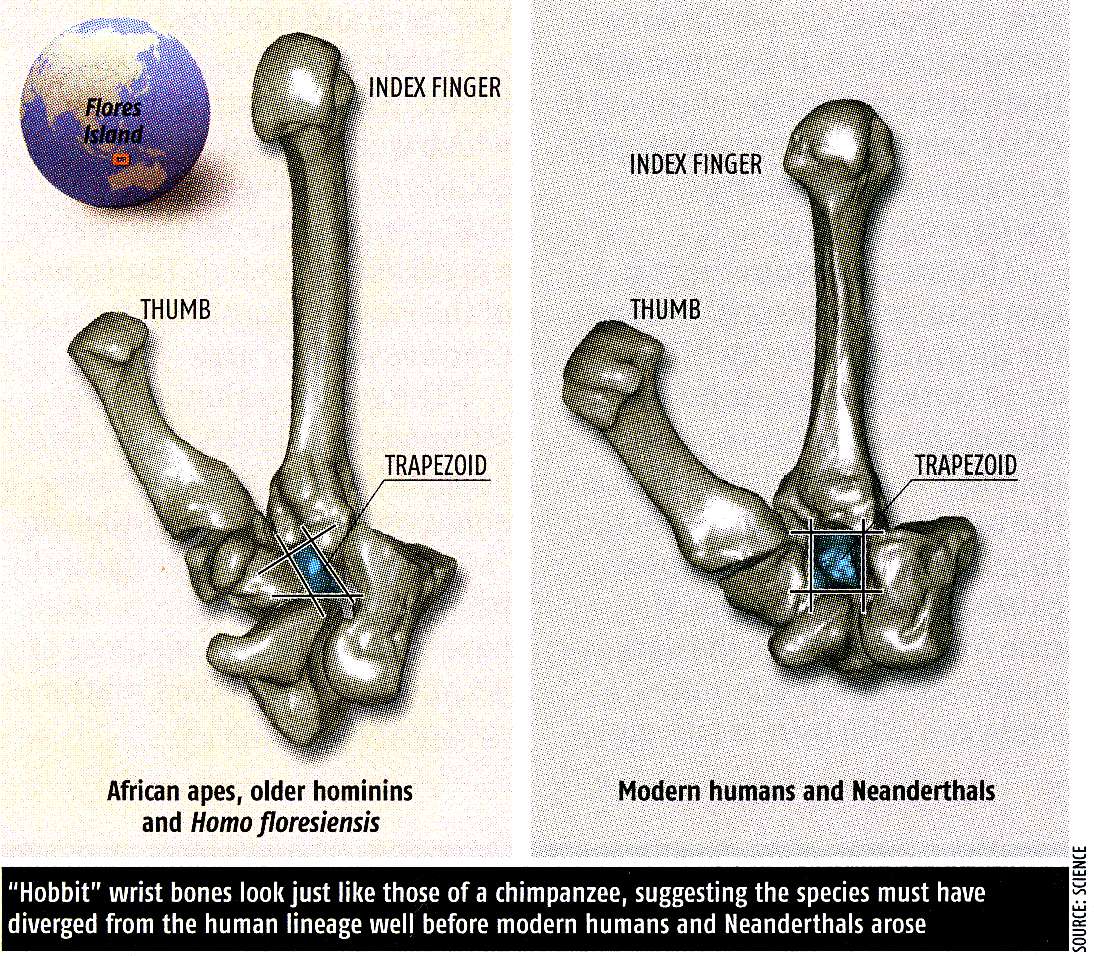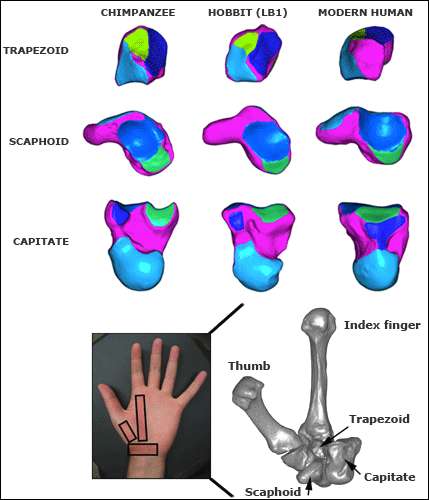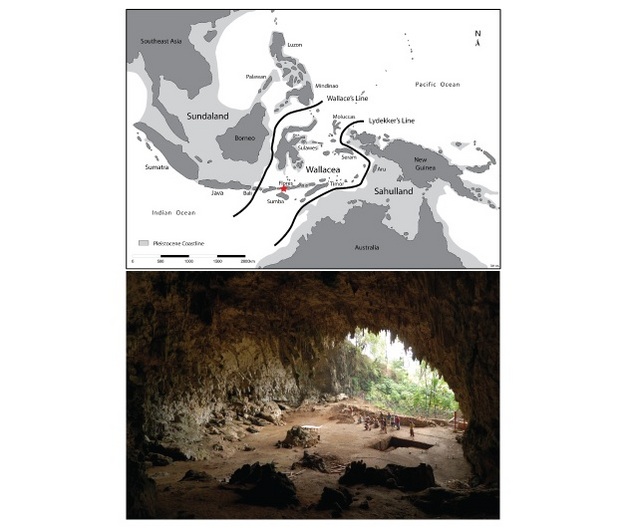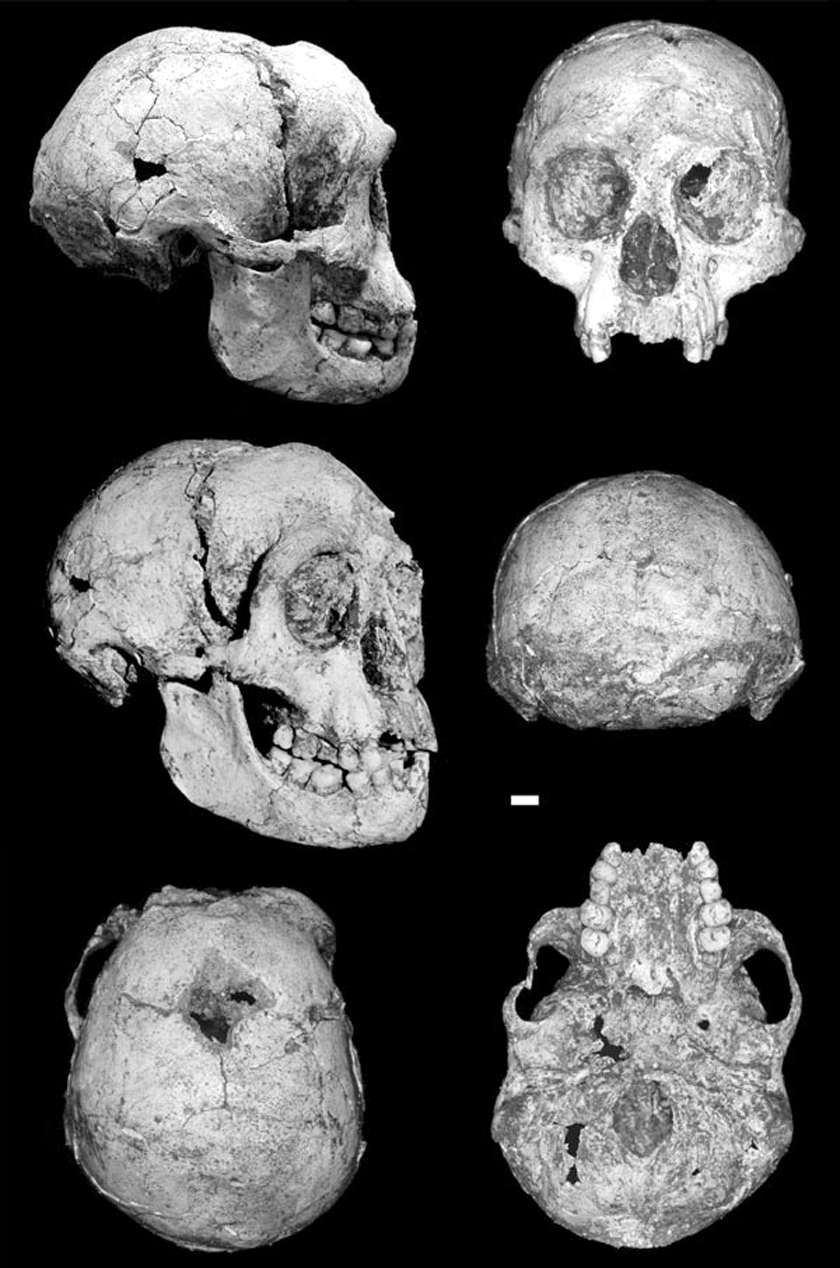The young adult female lived relatively recently yet was unlike any other hominid species known she was only a metre tall with long limbs relative to her torso and a tiny cranium compared with. Gary Richards of the University of California at Berkeley argues that humans could have settled on the island of Flores and.
 Homo Floresiensis The Most Recent Living Human Relative
Homo Floresiensis The Most Recent Living Human Relative
Yousuke KaifuNational Museum of Nature.

Homo floresiensis proportions compared to a modern human. A new idea emerges. The Mata Menge mandible superimposed on the Homo floresiensis skull LB1 and compared with a modern human skull from the Jomon Period of Japan. The molars are smaller than those of H.
The angle of humeral torsion is much less than in modern humans. Fossils of the earliest members of our species archaic Homo sapiens have all been found in AfricaFossils of modern Homo sapiens have been found in Africa and in many other sites across much of the world. A very small human ancestor made a very big splash back in 2004 when researchers discovered the remains of Homo floresiensis a 3-ft prehuman hobbit in a cave on the Indonesian island of FloresThe origin of the species and the route it took to Flores have been much discussed since then.
The cranial capacity of LB-1 is only 417cc significantly lower than modern humans 1400cc and well below the brain size of other species in the genus Homo. Coupled with brainbody size correlation in Homo sapiens calculated based on a sample from 20 worldwide modern human populations we construct new models of the brain size reduction in the evolution of H. Erectus rested on craniofacial similarities such as a low cranial vault thick cranial bones a frontal keel mastoid fissure and a fissure between the tympanic plate and entoglenoid pyramid as well as biogeographical considerations.
The initial proposal that H. The results show a more significant contribution of scaling effect than previously claimed. Thats more than one-third the size of the modern human brain which boasts an average volume of about 1300 cubic cm or 79 cubic inches.
Bones and joints of the arm shoulder and the lower limbs suggest that H. Nicknamed the hobbit this creature stood just over a meter tall with short legs big feet and a tiny. Among the species that make up the human family that relative is surely Homo floresiensis.
A group of pygmies still lives near the cave where the short-statured Homo floresiensis was discovered. The shape of the pelvis and the proportions of the limbs looked primitive reminiscent of australopithecines or the earliest of human species Homo habilis from around 2-3m years ago. Floresiensis was more similar to early humans than modern humans characteristic bipedal foot that includes a big toe aligned with other toes and a locking mechanism on the middle of the foot to help stiffen the arch after heel lift occurs.
Denisovans only known from from ancient DNA and a handful of bones and teeth were closely related to Neanderthals. Compared with modern humans Neanderthals had shorter stockier skeletons and larger noses but their brains were just as large if not larger. Homo floresiensis is a healthy human.
The findings suggested H. Dental analysis suggests Homo floresiensis was a separate species from modern man. Hobbit species did not evolve from ancestor of modern humans research finds Bone study shows there is no evidence the 11-metre tall Homo floresiensis had any links with the much larger Homo.
Whereas some of the molar morphologies are more progressive even compared to those of modern humans. The humeral head of modern humans is twisted between 145 and 165 degrees to the plane of the elbow joint whereas it is 120 degrees in H. Alignment of the toes and femural anatomy suggest that Homo floresiensis was bipedal.
Sites older than 150k include Florisbad Omo-Kibish Ngaloba and Herto. The Hunt for the Ancient Hobbits Modern Relatives. Erectus may be the ancestor of.
Major fossil sites of early Homo sapiens. Floresiensis descended from H. Brain mass skeletal proportions epiphyseal union orofacial morphology dental development size of the pituitary fossa and development of the paranasal sinuses vault bone thickness and dimensions of the hands and feet all distinguish H.
Sites dating to about 100k include Klasies River Mouth Border Cave Skhul. The teeth of H. Floresiensis from modern humans with ME cretinism.
Homo erectus is the only hominin known from island Southeast Asia prior to the arrival of modern Homo sapiens around 6045 ka. Luzonensis are small and mesiodistally the length between the two ends of the tooth shortened. The ECV of LB1 thus measured 426 cc is larger than the commonly cited figure in previous studies 400 cc.
Luzonensis presents a number of characteristics more similar to Australopithecus and early Homo than to modern humans and more recent Homo.
 Episode 10 Field Guide The Hobbit An Unexpected Discovery Past Time Paleo
Episode 10 Field Guide The Hobbit An Unexpected Discovery Past Time Paleo
 Global Implications For Homo Floresiensis Heritagedaily Archaeology News
Global Implications For Homo Floresiensis Heritagedaily Archaeology News
 Homo Floresiensis The Most Recent Living Human Relative
Homo Floresiensis The Most Recent Living Human Relative
Big Questions About Little Hominins Australasian Science Magazine
 The Geometry Of Hobbits Homo Floresiensis And Human Evolution Jungers 2009 Significance Wiley Online Library
The Geometry Of Hobbits Homo Floresiensis And Human Evolution Jungers 2009 Significance Wiley Online Library
 Pin On Science Archeology Anthropology
Pin On Science Archeology Anthropology
 Homo Floresiensis Foot Compared To A Modern Human S Anthropology Net
Homo Floresiensis Foot Compared To A Modern Human S Anthropology Net
 Homo Floresiensis Two Years Out
Homo Floresiensis Two Years Out
 Homo Floresiensis Making Sense Of The Small Bodied Hominin Fossils From Flores Learn Science At Scitable
Homo Floresiensis Making Sense Of The Small Bodied Hominin Fossils From Flores Learn Science At Scitable
 Homo Floresiensis The Most Recent Living Human Relative
Homo Floresiensis The Most Recent Living Human Relative
 Hobbit S Brain Size Holds Clues About Its Ancestor
Hobbit S Brain Size Holds Clues About Its Ancestor
 The Geometry Of Hobbits Homo Floresiensis And Human Evolution Jungers 2009 Significance Wiley Online Library
The Geometry Of Hobbits Homo Floresiensis And Human Evolution Jungers 2009 Significance Wiley Online Library
 Hobbit Species Did Not Evolve From Ancestor Of Modern Humans Research Finds Evolution The Guardian
Hobbit Species Did Not Evolve From Ancestor Of Modern Humans Research Finds Evolution The Guardian
 Lifelike Figures Figures Ancient People Human Species Ancient Humans
Lifelike Figures Figures Ancient People Human Species Ancient Humans




